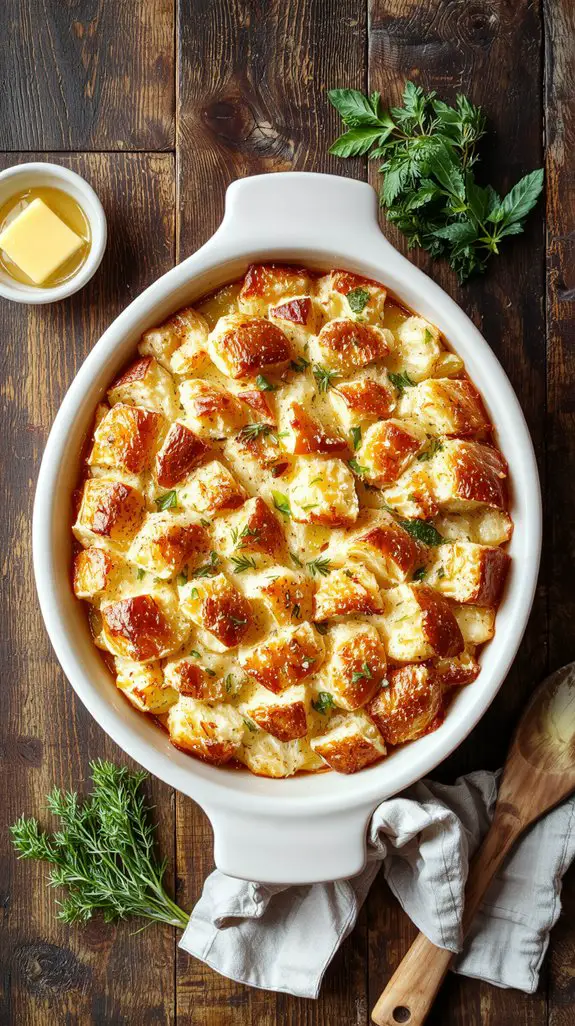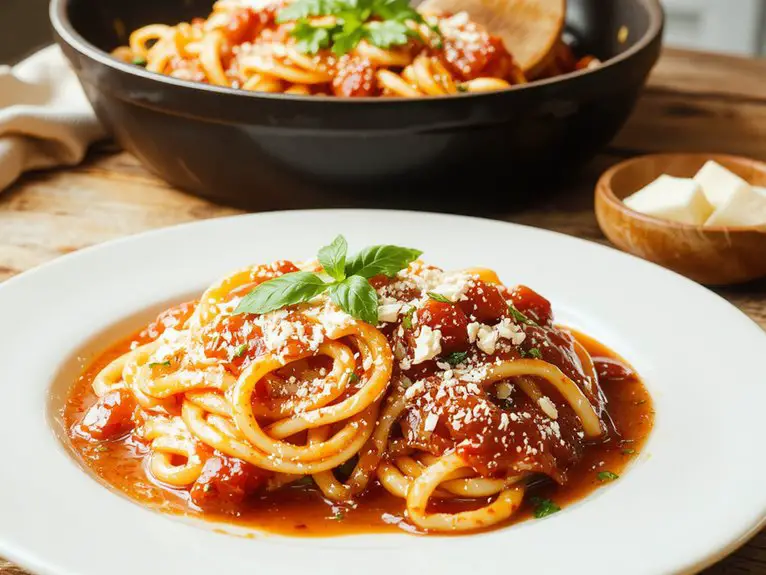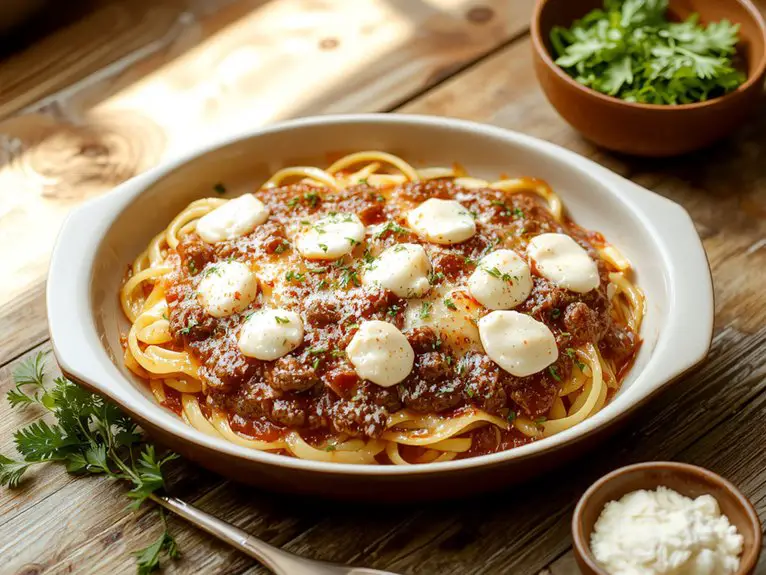Recipe
This homemade stuffing recipe is hands down the best way to elevate your holiday meals—or any meal, really. It’s got that perfect balance of savory herbs, tender bread, and just the right amount of crunch that makes it irresistible.
What sets this apart? The secret’s in using fresh herbs like thyme and sage, giving it that aromatic, earthy flavor that store-bought versions just can’t compete with. Plus, a touch of butter-toasted bread adds that golden crispiness everyone craves.
I’ve been making this for years, and it’s always the first dish to disappear at the table. Whether you’re a seasoned cook or just starting out, this recipe is foolproof and guaranteed to impress. Get ready to make stuffing the star of the show!
Ingredients
The key to a standout homemade stuffing lies in the quality and balance of ingredients. Fresh, aromatic elements elevate the dish, while thoughtful substitutions guarantee flexibility without compromising flavor. Here’s what you’ll need:
Base Ingredients:
- Bread: Day-old sourdough or French bread works best—its sturdiness soaks up flavors without turning mushy. (No stale bread? Toast fresh bread in the oven for 10 minutes.)
- Butter: Unsalted butter is non-negotiable for that rich, savory base.
- Onion & Celery: These provide the essential aromatic foundation—don’t skip them!
Herbs & Spices:
- Fresh Sage & Thyme: Fresh herbs are a must for their vibrant, earthy notes. (Dried herbs can be used in a pinch—halve the amount.)
- Parsley: Adds brightness and freshness.
- Salt & Pepper: Season generously; taste as you go.
Liquid:
– Chicken or Vegetable Stock: Use low-sodium stock to control the saltiness. Homemade stock is ideal for deeper flavor.
Extras (Optional but Worth It):
- Dried Cranberries or Apples: For a touch of sweetness and texture.
- Chopped Walnuts or Pecans: Adds a delightful crunch.
- Sausage: For a heartier stuffing, brown some mild or spicy sausage and mix it in.
Pro Tip: Don’t overmix the bread cubes—gentle folding assures a light, fluffy texture. If you’re feeling adventurous, add a splash of white wine to the stock for an extra layer of complexity.
How to Make the Best Classic Herb Stuffing Recipe

- Preheat your oven to 350°F (175°C). This guarantees your stuffing cooks evenly and develops a golden crust. A warm oven is key to achieving that perfect texture.
- Cube the bread into 1-inch pieces and spread them out on a baking sheet. Toast in the oven for about 10-15 minutes, until slightly crisp but not fully browned. This step prevents the stuffing from becoming soggy.
- Melt ½ cup of butter in a large skillet over medium heat. Add 1 cup each of diced celery and onion, sautéing until they’re soft and translucent, about 5-7 minutes. This builds the foundational flavor of your stuffing.
- In a large mixing bowl, combine the toasted bread cubes and sautéed vegetables. Toss gently to distribute the mixture evenly. Overmixing can break the bread cubes, so handle with care.
- Whisk together 2 cups of chicken broth, 2 beaten eggs, 1 tablespoon of poultry seasoning, and 1 teaspoon each of dried sage and thyme. Pour this mixture over the bread and vegetables, folding gently to coat. The liquid helps bind the stuffing and keeps it moist.
- Transfer the mixture to a greased baking dish and spread it out evenly. Cover with foil and bake for 30 minutes.
Remove the foil and bake for another 15-20 minutes, until the top is golden and crispy. This two-step baking guarantees a soft interior and a crunchy top.
– Let the stuffing rest for 5-10 minutes before serving. This allows the flavors to meld and makes it easier to slice and serve neatly.
Pro Tip: For extra richness, substitute some of the broth with melted butter or add a handful of dried cranberries and chopped nuts for a sweet-and-savory twist.
Watch-Out Warning: Avoid overpacking the stuffing into the dish—it needs space to expand and crisp up. If it’s too tightly packed, it’ll steam instead of bake.
Flexibility: This recipe works in a 9×13-inch dish or can be baked inside the turkey. If baking inside the turkey, guarantee the turkey reaches a safe internal temperature of 165°F (74°C) to avoid any food safety concerns.
Nutrition
This homemade stuffing recipe is a classic side dish, packed with wholesome ingredients.
Here’s the nutrition breakdown per serving:
Calories: 180
Total Fat: 7g
Saturated Fat: 2g
Cholesterol: 10mg
Sodium: 350mg
Total Carbohydrates: 25g
Dietary Fiber: 2g
Sugars: 3g
Protein: 5g
Chef Tips
When making stuffing, I always recommend using slightly stale bread, as it’ll absorb moisture better without becoming soggy. I also toast the cubes lightly to enhance their texture.
Don’t overmix—keep it chunky for a hearty bite. Fresh herbs like thyme and sage elevate the flavor.
Finally, let it rest after baking; this allows the flavors to meld. Trust me, these small steps make a big difference.
Frequently Asked Questions
Can I Use Gluten-Free Bread?
Yes, I can use gluten-free bread for stuffing. I’ll just make sure it’s sturdy enough to hold up when mixed with liquids and seasonings. Toasting it beforehand helps prevent it from becoming too soggy.
How Do I Prevent Soggy Stuffing?
I dry my bread cubes thoroughly before mixing them with other ingredients, sometimes leaving them out overnight. I also avoid over-saturating the mixture with broth—adding it gradually guarantees the stuffing stays moist but not soggy.
Can I Make Stuffing Ahead of Time?
Yes, I can make stuffing ahead of time. I’ll prepare it up to baking, cover it tightly, and refrigerate it for 1-2 days. Before serving, I’ll let it sit at room temperature, then bake as usual.
What’s the Best Bread Type for Stuffing?
I always use day-old sourdough or French bread for stuffing—it’s sturdy, absorbs flavors well, and doesn’t turn mushy. Sometimes I’ll mix in a bit of cornbread for sweetness, but crusty artisan bread’s my go-to.
Can I Freeze Leftover Stuffing?
Yes, I can freeze leftover stuffing. I’ll let it cool completely, then store it in an airtight container or freezer bag. When I’m ready to eat it, I’ll thaw it overnight and reheat it thoroughly.










